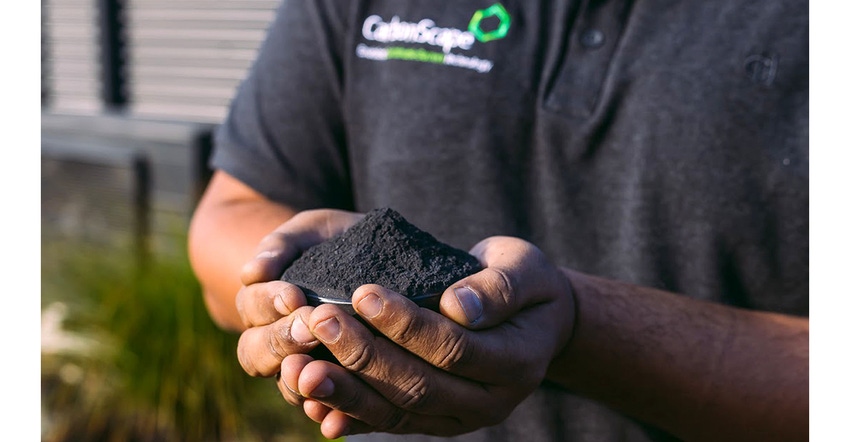CarbonScape’s Renewable ‘Biographite’ Anode Material Ready to Scale
Wood byproduct-based graphite substitute can constitute 90% of an anode using a low cost, carbon-negative process.
October 19, 2023

In the midst of a battery industry boom seeking immediate inroads to alleviating climate-change dangers worldwide, certain facts need confronting: To work, batteries need minerals; and the amount, location, chemical performance, scalability, and supply-chain control (price) of these raw materials is a constantly changing picture of concern.
And this is rapidly gaining global attention. In September, Finnish-Swedish forestry giant Stora Enso, leading battery producer Amperex Technology Ltd (ATL), a subsidiary of Tokyo-based TDK, and other parties have invested $18 million in Riverlands, New Zealand-based startup CarbonScape to commercialize ‘biographite’ for use in batteries, specifically battery anodes.
Producing alternative battery materials from trees (lignin) is not new and Stora Enso is already investing in these kinds of solutions. However, the hard carbon that they are currently making from lignin is used as a low-volume additive. CarbonScape’s biographite will constitute more than 90% of the anode.
Asked to describe his company (“Are you an R&D company? An engineering company? A chemical company?) CarbonScape CEO Ivan Williams told Battery Technology, “We’re a technology developer,” adding “From Stora Enso in forestry to ATL in batteries, we are bookending the supply chain to bring biographite to the world on an industrial scale, as fast as possible.”
As previously reported, commercial lithium-ion batteries use graphite as an anode to store lithium ions during charging. The lithium ions are inserted between layers of graphite in a process called intercalation. Upon discharging, lithium ions are released by the graphite anode and travel through the electrolyte to the cathode, delivering power.
Mined or made
Not accounting for an evolving battery recycling supply stream, there are two current sources of graphite, each with a considerable carbon footprint. Natural graphite is mined from the earth and processed from flakes, then rolled into spheres by impact milling and coated with carbon through thermal vapor decomposition. The impact milling results in pores and surface imperfections that actually increase the graphite ion-storage capacity compared to its theoretical values.

Synthetic graphite is produced from coal tar or petroleum coke at very high temperatures (a minimum of 3000 °C). Other elements including boron, phosphorus, and nitrogen can be added to the graphite production process to lower the processing temperature.
Technically, wood-based biographite is another synthetic graphite, but with a starkly different processing picture. For one thing, not a single tree needs to be cut down to envision biographite-based anodes on a global scale. By using less than five percent of existing forestry industry byproducts (wood chips and sawdust) generated annually in Europe and North America, CarbonScape’s cleaner, faster process of producing synthetic graphite could produce enough biographite to meet half the total global projected graphite demand for EVs and grid-scale batteries by 2030, said the company.
With more than 90% of the world’s graphite anode manufacturing controlled by China, CarbonScape’s biographite technology enables domestic production of this critical material from local, low-cost, renewable feedstocks. This is crucial given sources are already forecasting a global graphite supply deficit in the area of 777,000 metric tons per year by 2030, due to exponential increases in battery demand.
Validating and expanding
In addition, the patented CarbonScape technology is carbon-negative, saving up to 30 metric tons of carbon dioxide emissions per metric ton of material compared to other forms of graphite. Biographite can also be produced from available feedstocks near battery factories, further helping cut CO2 emissions compared to transporting mined graphite from distant locations, the company noted.
CarbonScape has a pilot facility in Marlborough, New Zealand, which produces bio-graphite for customer testing and validation, and the company will be putting the new investments to use in commercializing it, leveraging world-class analytics and materials characterization, as well as extensive battery testing, Williams said. So far, the company reports its low-temperature process creates a biographite with a purity equivalent to costly high-temperature thermal treatments. The material has a final purity in excess of 99.95 wt% carbon. Individual impurities are present below 50 parts per million. Furthermore, its unique microstructure allows more rapid movement of lithium ions, translating to superior fast-charge capacity (>60% capacity retention at 2C) compared to natural graphite.
Earlier this year, CarbonScape opened an EU office in The Netherlands to address Europe’s lack of a domestic graphite supply chain. Plans are to announce a US office in the near future, CEO Williams said. For more information, visit www.carbonscape.com.
About the Author(s)
You May Also Like





